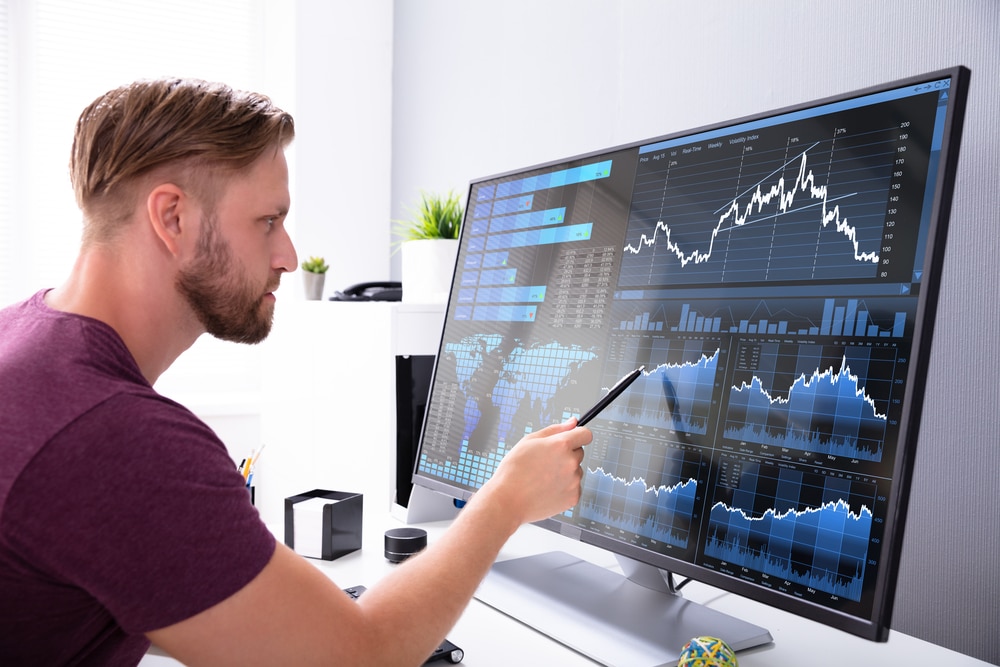Trading is a complicated process. Getting truly excellent at making the right transactions could take years, if not decades. Even professionals, however, have days when their expectations and what they gain or lose are radically different. This is because markets are a continually changing environment where many factors outside human control influence asset pricing.
The concept of slipping captures this phenomenon. Depending on which way it goes, slippage might be a pleasant gift or an unwelcome surprise.
What is slippage?
Spillage is the difference between the price you expect to purchase or sell and the price at which your trade happens. This is especially common in fast-moving, highly volatile markets that are vulnerable to sudden and unexpected changes in a trend.
Depending on the direction that the price moves, whether you are going long or short, and whether you are opening or closing a trade, the price difference might be positive or negative.
- Negative slippage occurs when the actual price at which a trade is executed is worse than the order price.
- Positive slippage means that the price at which a deal was executed was better than the price you requested.
How does spillage occur in forex trading?
Slippage is likely to occur when there is low liquidity in the market or a significant level of volatility. This is because of the fact that there are fewer market participants willing to take the opposing side of a trade-in low liquidity markets, necessitating greater time between placing an order and the order is executed once a buyer or seller has been identified. The price of an asset may vary as a result of this delay, indicating that you have experienced slippage.
This is more common on less popular currency pairs such as NZD/CHF than major pairs such as EUR/USD and USD/JPY with significant liquidity and minimal volatility.
For example, if you buy the CAD/JPY at 1.2050, but the order is executed at 1.2045, you will receive a five pips profit; this is positive slippage. Negative slippage, on the other hand, if you buy the USD/CHF at 1.4042, but the order is filled at 1.4047, you will lose five pips more.
What causes slippage?
- High volatility
First, high volatility is the primary cause. This occurs when there is major news or economic data that causes large market swings. Brokers are typically scrambling to fill orders during this time, which might result in pricing fluctuations.
- Low liquidity
When there aren’t enough market participants willing to offer the price you want, it’s called low liquidity. As a result, there is a considerable time lag between when you make an order and when you find a buyer or seller. It typically applies to uncommon assets that aren’t well-known among market participants.
- Big position order
Large orders are another cause that comes less frequently but is worth addressing. Slippage occurs when a substantial order is placed, but no one is interested in filling it at the intended price level. This happens most often when you don’t conduct enough market research and wind up buying a currency that isn’t widely traded in huge quantities.
- Brokers manipulate prices
Because there is no single currency exchange, price manipulation is done by brokers, who are mainly private companies that are not bound by a system of moral principles. They would manipulate spreads and prices as they saw fit to get advantageous market positions.
While this can and does still happen on rare occasions, it is now prohibited, and you will be protected if you trade with a licensed broker. If a broker chooses to engage in this practice, regulators will step in and penalize them with massive fines.
How to avoid slippage in forex
- Trade low-volatility, high-liquid markets
By trading markets with low volatility and good liquidity, you can reduce your risk of slippage. This is an excellent combination because low volatility means the price is less likely to fluctuate rapidly, and high liquidity indicates many active market participants accommodate the opposite side of your bets.
You can also reduce your risk of slippage by limiting the trading hours to when there is the most trading activity, as this is when liquidity is at its peak. As a result, there’s a better probability that your trade will be completed swiftly, and at a price you specified. Forex is a 24-hour market. However, the most liquid time is when the biggest volume of trades occurs, for instance, after the London Stock Exchange is open for trading.
- Use stop-loss and limit orders to protect your positions
Unlike other types of stops, guaranteed stops do not slip and will always close your trade at the exact level you choose. As a result, they’re the most effective strategy to mitigate the danger of a position going against you. It’s worth noting, though, that guaranteed stops, unlike ordinary stops, come with a premium if they’re triggered.
On the flip side, limits can help reduce the chance of slippage while you’re starting a transaction or want to cash in on a profitable trade.
- Avoiding trading around critical economic events
Avoiding trading during economic events is another way to avoid slippage. Monitoring the news will keep you informed about what’s going on in the world that could cause currency market disruptions. Economic calendars are usually freely available. It is suggested that you keep an eye on one so that you are aware of crucial forthcoming events.
Conclusion
Slippage is one of the major concerns in forex trading. It simply refers to a situation in which asset prices are placed above or below the price at which the order was placed. Although slippage can happen at any time, it is more likely in volatile or less liquid markets.
So, if you want to avoid the consequences of slippage, you should take certain safeguards. To begin, stay away from particularly volatile markets. Also, try to avoid trading when a major economic event occurs and use stop-loss and limit orders.
